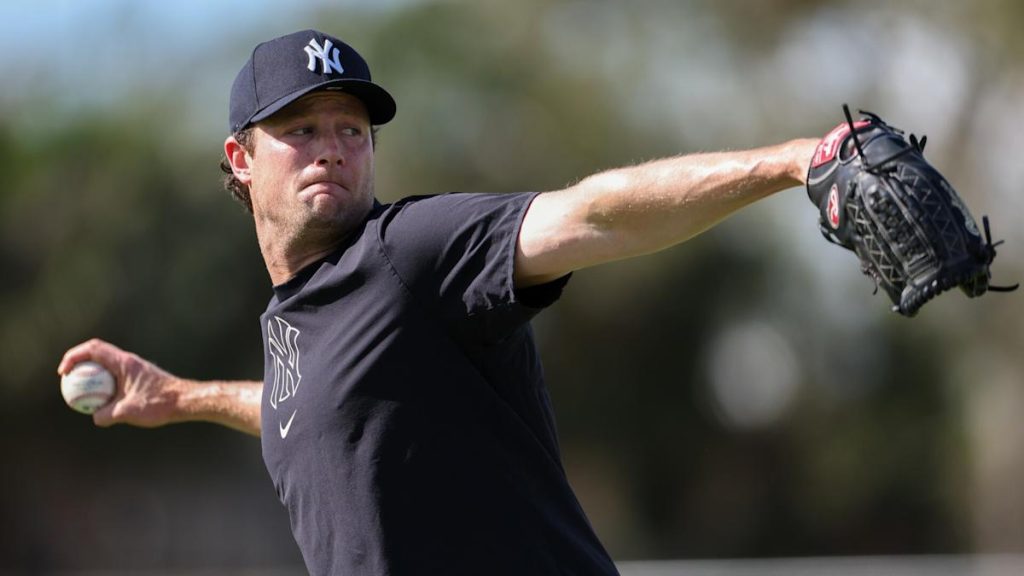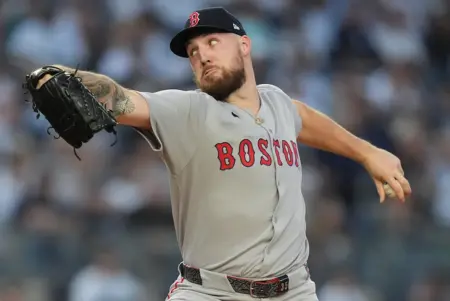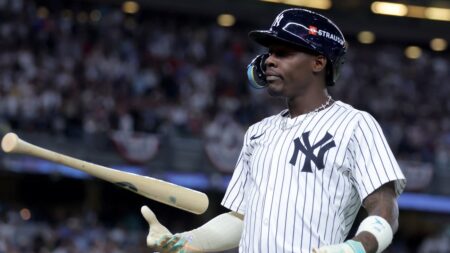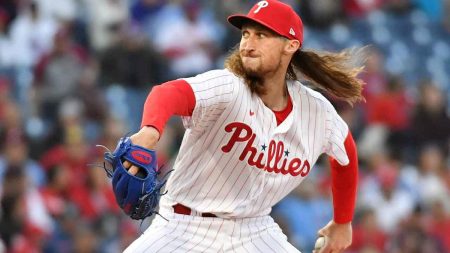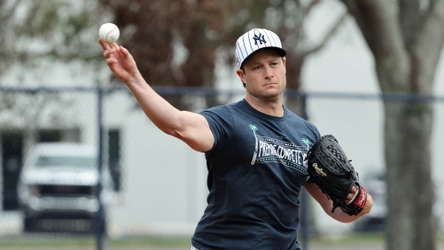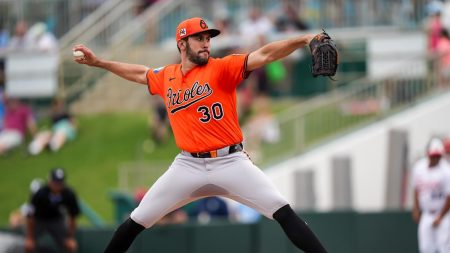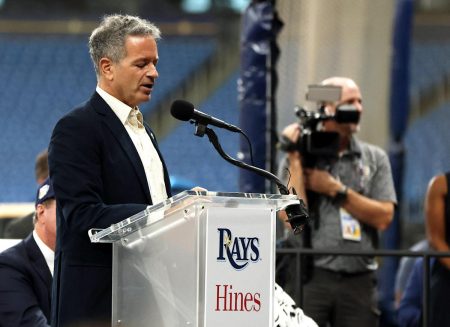Introduction to Fantasy Baseball "Busts"
The term "bust" in fantasy baseball is a bit of a loaded one. Essentially, it refers to players who are unlikely to meet the expectations set by their performance in the previous season or their current average draft position (ADP). Whether you call them "busts" or "overvalued," the key is recognizing that these players might not deliver the fantasy points you’re counting on. As we delve into the 2025 fantasy baseball season, the Rotoworld Baseball staff has identified several starting pitchers who are at risk of being overvalued and potentially leading to disappointment for their owners. Here’s a detailed look at these potential "busts."
Luis Castillo: The Declining Ace
Luis Castillo’s move to the Seattle Mariners was supposed to be a positive, but it might not be the panacea many fantasy managers are hoping for. Despite his impressive strikeout rate, the data suggests a significant decline. Castillo’s fastball velocity has dropped 1.5 mph since 2022, and he’s now a slight flyball pitcher, a marked change from his groundball-inducing days. While his 24.3% strikeout rate in 2024 was solid, it was buoyed by the pitcher-friendly T-Mobile Park. At home, Castillo’s ERA was 3.15, with a 5.9 K:BB ratio, but on the road, it ballooned to 4.25 with a 2.3 K:BB. His road numbers are a red flag, and drafting him as a top-25 starting pitcher seems risky. While a return to All-Star form isn’t impossible, it’s a bet many might regret.
Garrett Crochet: The Volatile Phenom
Garrett Crochet is a pitcher with undeniable talent, but his volatility is a significant concern. After the All-Star break, Crochet’s ERA ballooned to 5.19 over 38.2 innings, and while this is a small sample size, it’s indicative of the risks involved. His ability to miss bats is elite, but his command and consistency need work. The move to the Red Sox, a potential playoff contender, certainly helps, but his draft position as one of the first pitchers off the board is concerning. Given his volatility and the need to be coddled, it’s a bold move to draft Crochet as your best starting pitcher.
Hunter Greene: The Injury-Prone High-Velocity Ace
Hunter Greene’s 2024 season was marked by his high-velocity four-seamer and a new splitter, but the latter’s poor performance raises doubts. Despite improvements in zone rate and reduced hard contact, Greene’s success was partly due to good luck, with a 7.2% HR/FB rate and a high Hit Luck score, both of which are likely to regress. Greene’s injury risk, thanks to his high-velocity pitches, adds another layer of concern. Drafting him as a top-25 starting pitcher is a gamble, and his current ranking as the 46th SP suggests he might not live up to the hype.
Chris Sale: The Durability Question
Chris Sale’s 2024 was a remarkable comeback, earning him a Cy Young award. However, his durability remains a significant concern. Prior to 2024, Sale had thrown fewer than 50 innings in three of the previous four seasons. At 36, his ability to maintain consistency over a full 162-game season is questionable. His NFBC ADP of 34.15, making him the sixth pitcher off the board, seems premature. Given his injury history, it might be wiser to consider more durable options like Corbin Burnes or George Kirby, who both pitched over 180 innings with excellent WHIPs last year.
Roki Sasaki: The Unproven Phenom
Roki Sasaki is a highly touted prospect with a devastating splitter and near 100 MPH fastball, but his over-drafting as the 23rd starting pitcher is a red flag. Sasaki has a limited workload, throwing a career-high 129.1 IP in the NPB last season, and his injury history, including a recommendation for Tommy John surgery, adds to the risk. The Dodgers, known for pitcher management, will likely limit his innings, making it challenging for him to earn wins. His current fastball, while elite in velocity, has lost significant vertical movement, and the transition to a slightly larger ball in the U.S. may further complicate his adjustment period. Sasaki’s command and inconsistent slider also raise doubts about his immediate impact.
Blake Snell: The Injury-Prone Star
Blake Snell’s brilliance on a per-inning basis is undeniable, but his injury history is a significant concern. Despite moving to the Dodgers, one of the best teams in baseball, the team’s tendency to limit starting pitchers’ workloads doesn’t alleviate the issue. Snell has pitched more than 130 innings just twice in his career and is coming off a 104-inning season. His career home ERA of 2.69 contrasts sharply with his 3.74 road ERA, and Los Angeles’ hitter-friendly park doesn’t bode well for a pitcher with high walk rates and fly ball tendencies. Snell’s draft position as a top-25 starting pitcher might be overly optimistic.
Spencer Schwellenbach: The Inexperienced Revelation
Spencer Schwellenbach’s rise in 2024 was a pleasant surprise, but his lack of experience is a major concern. The 24-year-old spent the first two years of his collegiate career as a shortstop and only began pitching in 2021. His talent is evident, but his strikeout upside might not justify his draft day price tag as a borderline top 100 overall pick. While the potential is there for him to become an elite fantasy starter, the risk is high. Fantasy managers might be better off waiting a few rounds to grab a less expensive option with similar upside, such as Shane Baz or Gavin Williams.
Gerrit Cole: The Questionable Comeback
Gerrit Cole’s 2024 was marred by injuries and a genuine decline in skills. His strikeout rate has dropped each of the last three seasons, and his velocity has also declined, from 97.8 mph in 2022 to 95.9 mph in 2024. While he’s currently healthy, the downward trend is concerning, especially as he enters his age-34 season. Using a top 60 pick on Cole seems risky, and while a bounce-back is possible, it’s not a gamble many fantasy managers should take. Drafting a more reliable SP1 or SP2 might be the safer choice.
Conclusion
fantasy baseball is as much about identifying overvalued players as it is about finding undervalued gems. The key is to balance risk and reward, and these potential "busts" offer valuable insights into where to proceed with caution. Whether you’re in a re-draft or keeper league, recognizing these overvalued players can make the difference between a successful season and a disappointing one.

